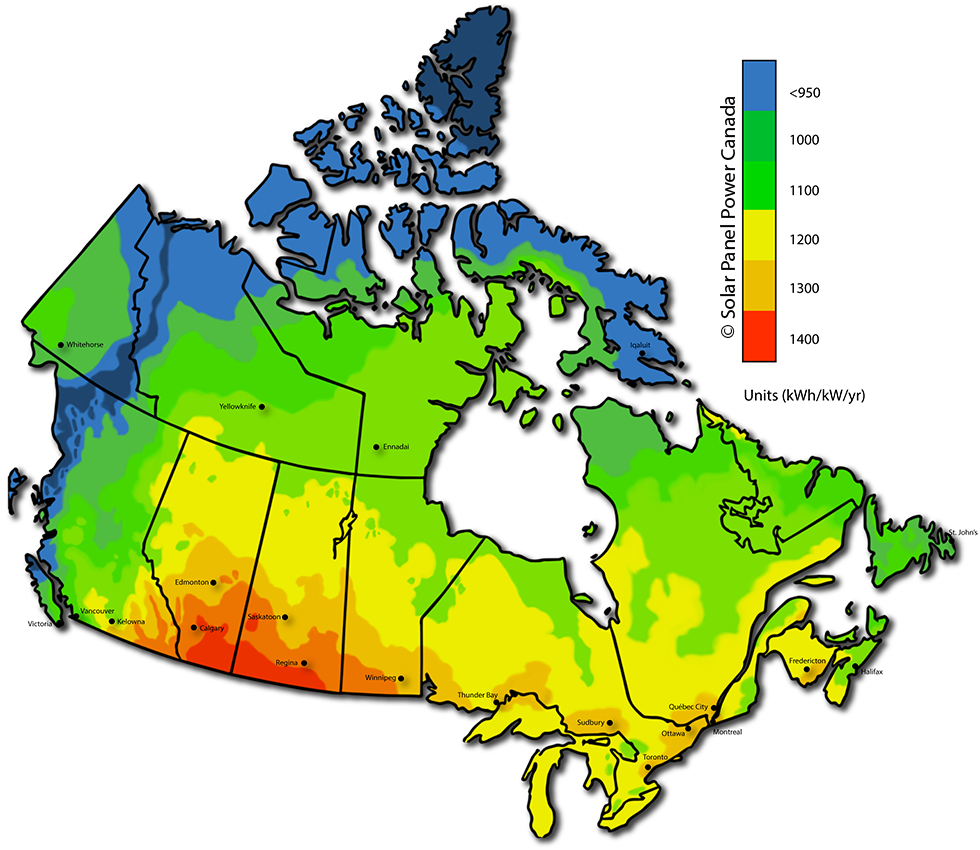How much energy can your hydronic solar system generate?
Introduction
Before making the decision to invest into a solar solution, there is an obvious legitimate question to ask: How much energy saving (expressed in KW.h) will my investment generate? And how long will it take me to get back my money (payback period)? This blog will deal with investment energy annual output. The payback period will be addressed in a separate article or blog.
What do my Annual Saving depend on?
Annual energy generated by a solar collector or a set of solar collectors (installed in parallel in this article) will depends on the followings parameters:

1. Location of Solar Collector (defined by your location's Longitude and Latitude).
2. Collector’s Solar Azimuth, which is nothing more than deviation from the south direction.
3. Collector’s tilt angle from the horizontal surface (or even a flat roof surface).
4. Fluid’s temperature inlet to the solar collector (23°C here). For fluids (Water, Glycol, etc...) temperatures other than 23°C, please contact our technical team @ admin@hydrosolar.ca or simply call us @ +1 (888) 686 7652.

Since southern oriented areas are always sunny, it’s always wise to have solar collectors facing south (means a zero Azimuth) or an absolute value of the Collector’s Azimuth as close
as possible to zero.
As a rule of thumb, the optimal Tilt angle value (please refer to the above picture) for a maximum annual energy output is
equal to your location's latitude (45 degree) in most of southern major Canadian cities (such as in Montreal and Toronto). Depending on their energy portfolio, some customers prefer to maximize their energy output on a seasonal basis:
1- Optimal Tilt Angle for a maximum winter heating energy output is between 65 and 75° (depending on location and operational conditions - The rule of Thumb is Latitude plus 15.6 Degree). This becomes very useful if
produced fluid heating energy is used for hydronic space heating (such as radiant hydronic floor heating, process heating, etc.…).
2- Optimal Tilt Angle for a maximum summer heating energy output is between 25 and 35° (depending on location and operational conditions - The rule of Thumb is Latitude minus 15.6 Degree). This type of installation is very
common in outdoor pools heating and other summer outdoor activities requiring low
to medium temperature hot waters.
Annual Energy Output (in KW.h) estimation procedure:
1- Know your location:
--1.a. If you live in a major Canadian city (such as the one listed in HYDROSOL 20 Tubes Panels Heat Output, HYDROSOL 25 Tubes Panels Heat Output, HYDROSOL 30 Tubes Panels Heat Output), please go to 2.
--1.b. If not, please choose the nearest major city to your location among the one listed in HYDROSOL 20 Tubes Panels Heat Output, HYROSOL 25 Tubes Panels Heat Output, HYDROSOL 30 Tubes Panels Heat Output.
----1.b.i. If the nearest found city is within 20 Km from your location please go to 2.
----1.b.ii. If the nearest found city is not within 20 Km from your location, please contact our technical team @ admin@hydrosolar.ca or simply call us @ +1 (888) 686 7652
2- Determine your Solar Azimuth: Place a compass (it could be as simple as using the compass app in your smartphone) in a horizontal position perpendicular to the southern facing part of your inclined roof. Write down the angle. It’s you future solar collector’s azimuth (Azimuth value is positive when collector is facing south‐west direction and negative when facing south‐east direction).
3- Determine your Tilt Angle: for inclined roof installations, the tilt angle is your roof angle. You can either measure it with laser measurement instrument of calculate the
angle by using trigonometric formulas.
Once the above are known, please go to HYDROSOL 20 Tubes Panels Heat Output, HYDROSOL 25 Tubes Panels Heat Output, HYDROSOL 30 Tubes Panels Heat Output), locate your city, Azimuth and Tilt angle and write down the Annual KW.h of generated for each Solar Panel. Total Annual Saving is the sum of all Panels Individual Savings.


Heat my 30×30 12ft ceiling in floor tubing thanks
Hello Odin Donald. Calculating energy saving from solar installation isn’t an easy task. that’s why we take the hassle of technical difficulty for our client for free. Please fill this form (https://hydrosolar.ca/pages/solar-domestic-water-heater-sizing-request) and we will let you know, based on you location, what you need to install, how and how much saving will your investment generate.
Hello Emmy Glover. Thank you for question. Yes you’ll certainly need solar pipes to transport the heated fluid from the Vacuum Tube Solar Collector to the Hot Water Storage tank. there are different piping options compatible with solar application (Copper, Stainless Steel, etc…). Our Flexible Stainless Steel pipes are best suited for such application. They are food grade stainless steel and flexible (easy to install and save you labour and time). you can find them on the following link: https://hydrosolar.ca/collections/solar-stainless-steel-pipes
Hello ISabella Wang. Like cars, phones and watches there are many types of solar collectors for fluid heating. it depends on where you live (Hot, mild or cold climate) and how you’re going to use your solar heated water (for domestic hot water heating, space heating, process heating etc…). I suggest you get in touch with us through contact us page, or by simply calling +1 888 686 7652
Hello Devon Bull. Yes time of the year affects solar radiation onto the collector as well as outdoor air temperature which both play a role in determining the performance of the collector. As a rule of thumb, in cities like Montreal, Toronto and Ottawa, a vacuum tube solar collector will generate 1/3 of its annual energy in winter and the remaining 2/3 in summer. Usually a more detailed energy simulation is required, you could contact us at +1 888 686 7652 or email our technical team at admin@hydrosolar.ca